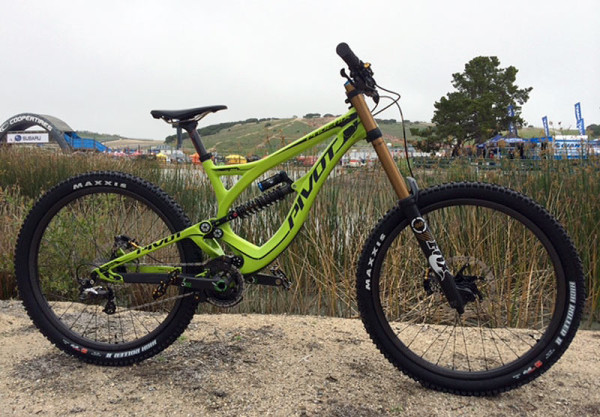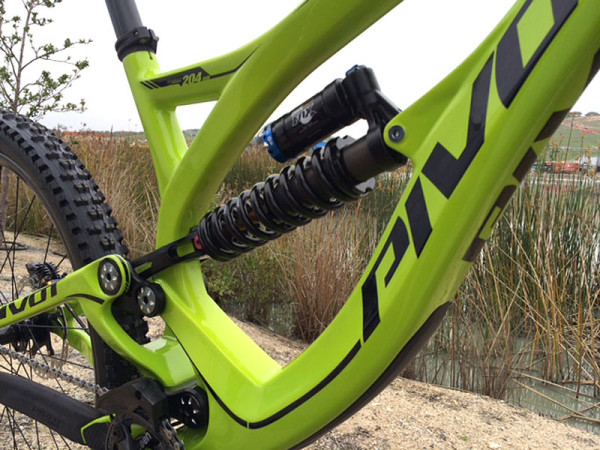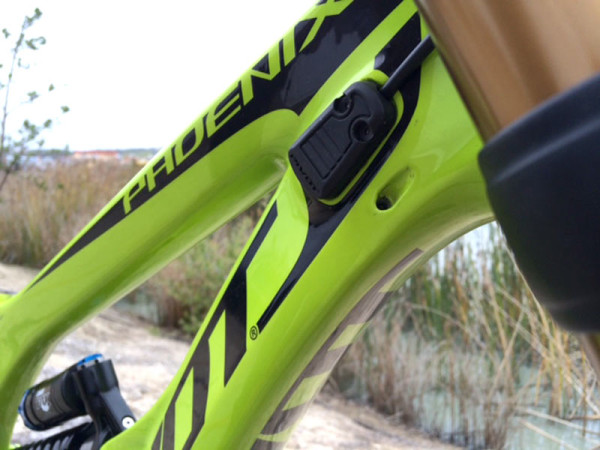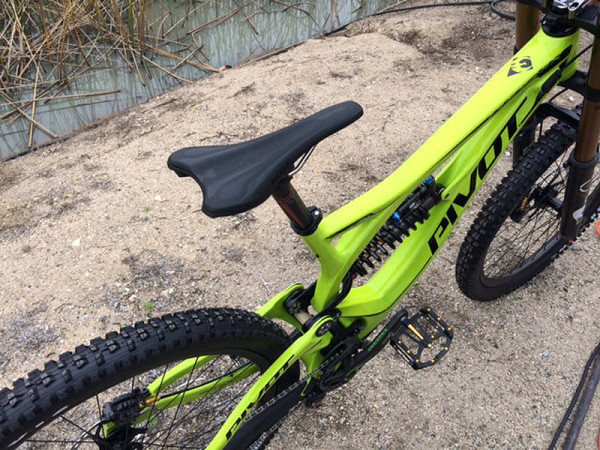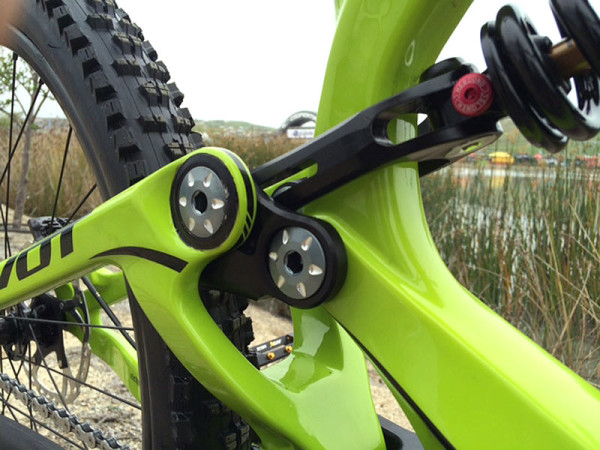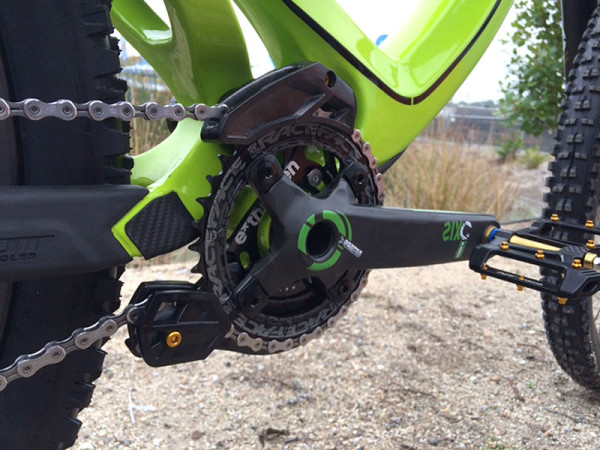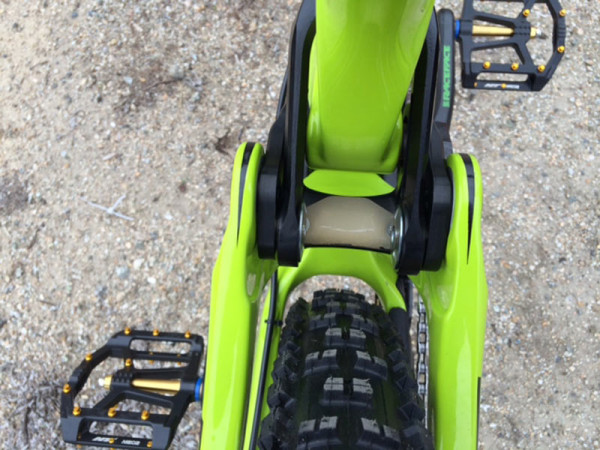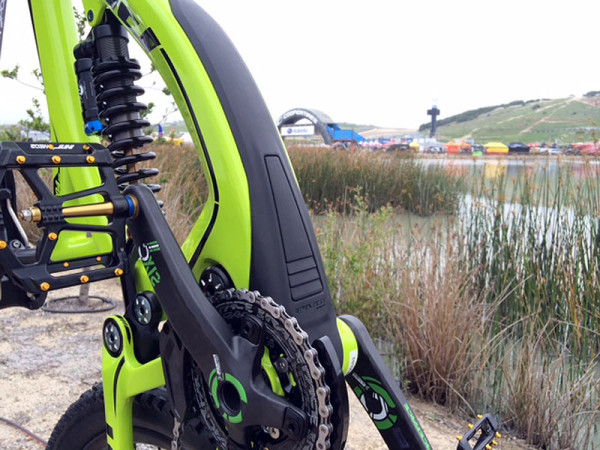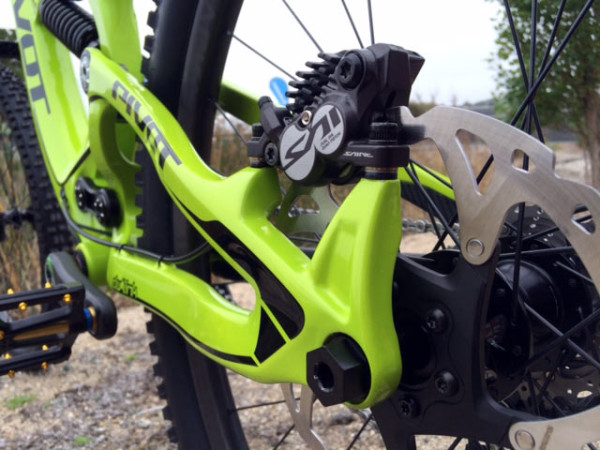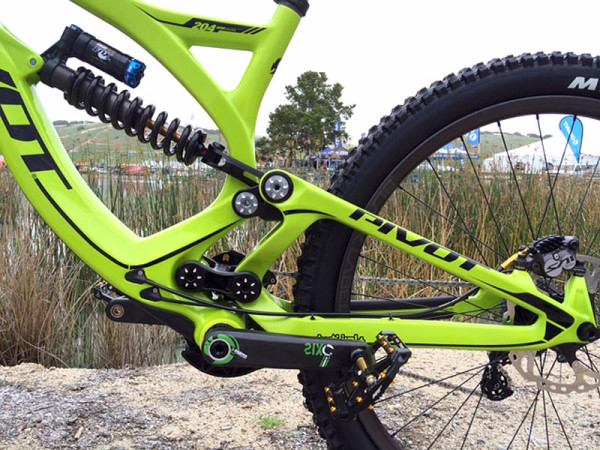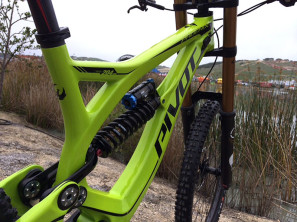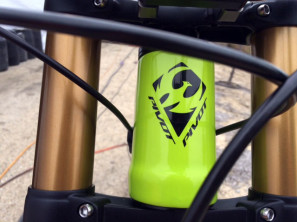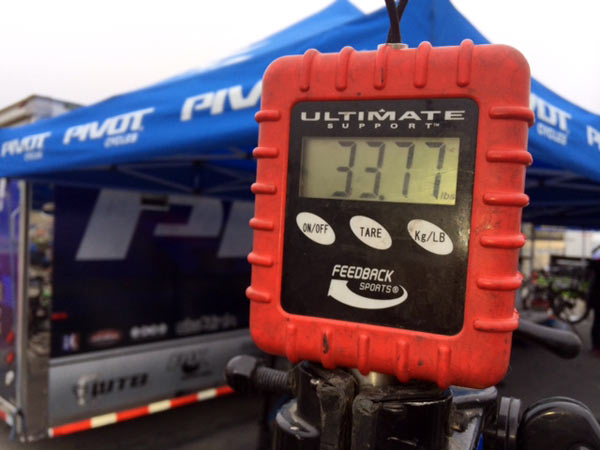We spotted distant photos of the new Pivot Phoenix DH 650B bike with a few Reynolds carbon wheel spy shots recently, and now the bike part of those pics gets official. The wheels, as you may notice, are blacked out for now.
Here’s the basics: It gets 204mm (8″) rear wheel travel out of a new DW-Link suspension design on a full carbon fiber frame. The complete bike shown here is spec’d with a full Shimano Saint group, DH casing Maxxis tires and Fox 40 fork, but only frameset pricing has been announced.
So, what makes it special, beyond just being one of the earlier production downhill bikes to make the switch to bigger wheels? Kevin Tisue, Pivot’s engineer, says they wanted something lighter. A lot lighter. Like two pounds lighter. And 27.5″. The prototypes were made with XC tube sets and different wheel options. They started riding 27.5″, fell in love with it and they knew they needed to make a DH bike with those bigger wheels. Here’s what they ended up with…
The new Phoenix DH Carbon is a World Cup level race rig. It has a slack 62.5º head angle, but Tisue says you can really get away with it even on the tight stuff. And there’s a super low 339.5 mm (13.34″) bottom bracket because they didn’t want to sacrificing cornering.
The entire frame is incredibly smooth and clean with nicely integrated internal routing. Under the bumper is a big port and clips covering a fairly large hole. No tubing internally, but the holes are large enough to fish cable through easily. The down tube’s shape can clear a single crown fork for cross-ups.
They codeveloped the Hightail saddle with WTB because they didn’t want to sacrifice travel and pivot location. The seat mast was bent forward and then leaned back, which means you can’t put the post all the way down, because the wheel may clear the sea tube but not the saddle. By leaning the seat mast back, the seat still is in a good location over the BB, so it’s still in the same average position. You would never know it pedaling the bike around. There’s even routing for a dropper post, and Tisue runs one on his bike with no issues.
Wanted the suspension to behave like the old Phenoix, but moving things made them lighter. The new tube shapes and positioning meant the frame could have more hollow sections, which saved weight.
Linkage uses 8mm bolts caps and 15mm shafts. Bearings are pressed straight into the carbon. Tisue says that’s not a durability or fitment issue with carbon, but it can be with a welded aluminum frame because tolerances are more difficult to get exactly right. The shock’s rear mount uses bearings rather than bushings to further reduce stiction.
Has a Pressfit BB, all their bikes have gone to it. They say it makes things stiffer, because of the bigger bearings…and it’s lighter. But it’s also 107mm, so it’s wider…likely to help it clear all the stays since the rear end’s pushed to 157mm axle spacing. Technically, that’s just 150mm with slots in the frame, not a new standard. It does mean you may need new end caps for your wheels, though.
A bumper (that putty looking thing in pic above) on the linkage isn’t required, but it helps take load off when the shock bottoms out. The reason is that the clevis mount puts pressure on the shock, and they don’t want it to snap the shock like has happened on some other well known brands.
The bottom of the down tube is heavily protected with an integrated bumper.
Chain stays are the same length as the old model, 442mm (17.4″) to keep it playful. Post mount 180mm rear brakes means it’s serious.
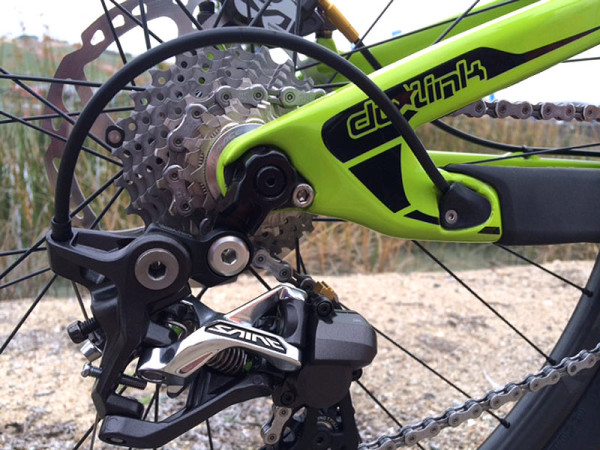
The headset is a tapered 1.5″ Zero Stack to 1.5″ standard, allowing the use of angle adjusters. Optional +/- 0.75º degree offset cups will be available separately.
It’ll come in four sizes and retail for $3,299 (frameset only). Available late summer 2014.
Put it all together and you get a World Cup bike that’s fun and lively. And light. This complete bike with pedals came in at just 33.77lbs (15.32kg).
